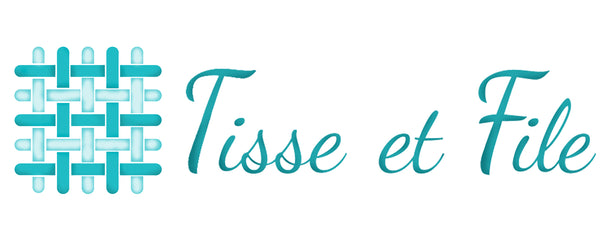
Hemp: the best yarn for the planet and our skin
Hemp has been cultivated for millennia, and traces of its use in textiles (clothing and other fabrics) can be traced back to over 6,000 years ago in Central Asia.
Hemp is used in much the same way as linen; in fact, fabrics woven from the fibers of these two plants are very similar. The characteristics of the fibers are also very similar. They are durable, reliable, resistant to moisture and UV rays, antibacterial and improve with repeated washing. Hemp fiber is also said to be best suited to human skin.
A little history

It is estimated that the first use of hemp could date back 10,000 years or more, notably in China, although the first intact fabrics found date back to 4000 BC. For millennia, the plant's fibers have been processed after harvesting, then spun and woven into clothing, fabrics of all kinds, household linen, bags, boat sails, ropes, ropes, tents and much more, since even painters' canvases are made from hemp.
Hemp is widely used: in the mid-19th century, it was used in around 75% of the world's textile production, thanks in particular to its strength.
In Europe, it was widely used in all sectors until it disappeared at the beginning of the 20th century in favor of synthetic textiles. It also disappeared in other countries, for various reasons, due to the classification of the Cannabis plant as a narcotic. Over time, man has differentiated between psychotropic species with very low THC levels used for textiles, paper, food, skin products, etc.
The plant
Hemp, like flax or nettle, has long, easy-to-extract fibers that make it a particularly interesting choice for textiles.
The annual plant is characterized by the presence of male and female plants, the latter bearing seeds called hempseeds.
Cultivation and processing are similar to those for flax. The plant reaches a height of around 2 meters when mature, usually in early autumn. The plant is mowed and lined up for retting and drying, the plant sheath enveloping the fibers must be dissolved, then the fibers are crushed, worked and combed. At this stage, the long, first-quality fibers, known as filasse, can be separated from the shorter filaments known as tow.
Plant characteristics
It's interesting to note that, in addition to improving soil quality, hemp production is disease-free, so no treatment is required. In addition, the fact that hemp is spread over the soil means that weeds cannot develop. These factors make hemp an eco-responsible choice, especially as it captures CO2 and consumes four times less water than cotton. On the same surface, it can also produce up to twice as much textile as cotton.
The hemp plant also detoxifies the earth.
Processing the plant
After harvesting, it's time for processing.
The stalks are first mowed, then cut into 40 cm pieces. These are then piled up, a process known as swathing. As with flax, the swaths are turned so that they wither. With alternating periods of rain and sunshine, the retting process begins. This removes the plant's pectin, after which the fibers become rot-proof. This step is essential to obtain a durable, high-quality fiber.
After retting, the straw is collected and stored in aerated sheds. The fiber (outer sheath of the stalk) is then separated from the chenvotte (center of the stalk). The fiber is carded, while the shives are processed for other uses.
Because of this lengthy mechanical treatment, hemp is a product with a high processing cost - a cost that fully meets environmental challenges.
Hemp fabric
Hemp fabric is healthy, antibacterial, comfortable and thermally insulating (it stays cool in summer and warm in winter). It also protects against UV rays, is versatile, absorbent (superior to cotton in every way), hyper-resistant and softens over time... if you wear it.
In the past, while fine linen was made from linen, two types of textile were woven from hemp:
- drap, whose warp and weft were made of hemp
- the whole droguet, with hemp warp and wool weft.
Today, hemp lends itself to a wide range of textile applications. It remains a very good eco-responsible choice, and its only real competitor is linen.
Tisse et File offers a range of hemp yarns:
- Lite hemp yarn from Lunatic Fringe, available in a wide range of colors
- 2/8 natural or bleached hemp yarn from Maurice Brassard
- 2/16 natural or bleached hemp yarn from Maurice Brassard
or this blend
- 2/8 natural or bleached cotton/hemp yarn from Maurice Brassard
And linen too:
- Bockens linen in 1/16;
- Bockens linen in 2/16;
- Bockens warp linen
- Warp linen 4/12
- Normandy linen
Now all you have to do is weave your piece!
